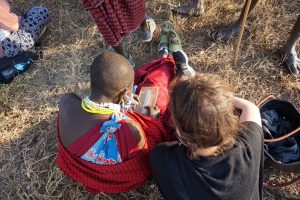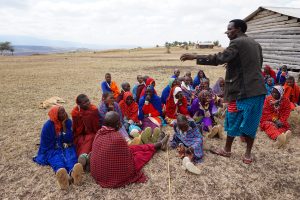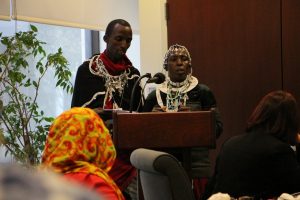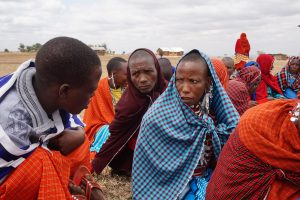Our Goals
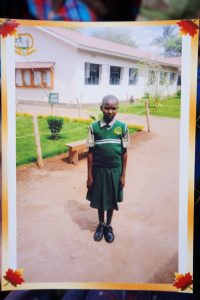
Negai in her school uniform (the first year Naserian funded her education)
Objective I: Education for widows and children
-
-
Educating one or more widows to become leaders in each of the areas of Naserian’s work: Education, Human Rights and FGM, Health and Water, and Economy (income-producing activities).
-
-
Training widows and seminaries to carry out education for children in schools, as well as lead Naserian sessions (independently of the coordinator) in the future.
Objective II: Health and Water
-
Training young widows about health and hygiene, who will help to teach other widows in their village. Therefore this will impact children, widows and pregnant women.
Objective III: Human Rights and FGM
-
Previously trained widows will train other widows, who will run workshops and expand their capacity to educate another 4 villages
Objective IV: Economy (Income Producing Activities)
-
Develop effective routes to market and/or business development for existing income producing activities: candle and soap making, traditional jewellery making and a small goat breeding collective
Some of Our Achievements up to 2019, in numbers
-
-
2010: Naserian founded
-
12: villages in which Naserian currently work, with the full support of male community leaders, running educational workshops for women and children, and FGM/C and human rights training for widows
-
3: community centres funded by the local council and community leaders, and a further children’s class centre donated by the MP
-
2: girls who are currently completing their education thanks to Naserian and their friends
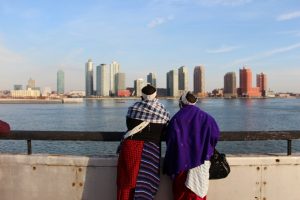
-
~0?: widows have suggested that within the Naserian community, in under a decade, ‘early and forced marriage and FGM has almost entirely stopped’
-
2: widows, Marie and Grace, who, alongside Naserian’s coordinator, advocated internationally and nationally for the rights of widows and shared Naserian’s best practice (at the United Nations’ Commission on the Status of Women and at the East African Community)
-
But of course these women’s achievements cannot be summarised in mere numbers. Naserian has raised the status of widows in whole communities, helping women to regain rights to their property, and continues to enable women to enjoy full lives and be agents of change in their lives and communities.
The latest achievements, up to 2019 include Naserian expanding Education programmes for widows and children considerably. Health education for pregnant women was expanded to a further 4 villages, meaning they currently serve 12 local villages. In addition to this they successfully built a classroom for children meaning another village’s children are able to access primary school – where before they had to travel 5-8km.
Previous Projects
Project 1: Coordinator for Naserian
Goal
Identify and establish a coordinator for one year to follow up on the formation of Naserian in July 2010, prepare for future projects, facilitate the implementation of projects and follow up on those projects.
Achievement
Coordinator has been found and appointed. Mibaku Mollel served as Co-ordinator and received on-line training from a number of sources including Trustee Zarin Hainsworth. He liaised with local community leaders in regard to the work of Naserian and gained their support. He engaged in face to face consultation with Chipua, a Tanzanian NGO working on training and enterprise support for disadvantaged women and girls. The Trustees agreed a salary and found funds for 12 months.
Mibaku set up a widows group in three villages: Eluwai, Lendikinya and Arkaria. These meet regularly and have elected a committee including a Chair, Secretary and Treasurer. They have created Maasai jewelry to sell including work with mirrors.
Mibaku began a data base of widows and an oral history noting the stories of the widows. He was assisted to organise training for 30 widows and also a train the trainer for two widows in collaboration with Chipua. He was also assisted by the Trustees to attend the United Nations Commission on the Status of Women where he made a number of presentations.
As the work load developed an Assistant Coordinator was appointed and funds found to support his part time work with Naserian. Alais Esato Sima worked with Mibaku in the development of the organisation.
Mibaku has left work with Naserian to found an organisation to help the Maasai community. Alais is the current coordinator.
Alais has engaged with the community to establish a firm foundation for the organisation and have consulted with the community and the Trustees to create a constitution and registration of the organisation.
Project 2: Sharing best practice
Goal
Organise a visit from other organisations in the region to share best practice. The purpose of such visits will be to visit the coordinator and visit women in the villages to establish self-help groups and train the coordinator and assistant coordinator to share best practice.
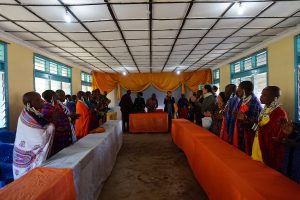
Monduli meeting with Naserian, community leaders, the local MP and other non governmental organisations to share best practice
Achievement
An example of best practice is Women of Purpose in Uganda which inspired the founding of Naserian. A meeting between them took place in New York at the UN Commission on the Status of Women and funds are being sought for a visit from Jane to Arusha. Another example of best practice is Chipua, an organisation based in Dar-es-Saalam. A number of face to face meetings have taken place with members of the senior team of Chipua and Mibaku. Alais is also in touch with Chipua. Alais worked with non-governmental organisations in Arusha for widows’ training in soap and candle making, and in Female Genital Cutting – which was cascaded throughout the Naserian community.
Project 3 – Human rights training for widows
Goal
Identify a suitable training organisation to provide training on human rights for women and widows in Tanzania. Organise human rights training that takes into consideration the constitution of Tanzania as well as international human rights standards.
Achievement
Chipua was identified as a suitable training organisation with experience in this field, the training schedule created, materials prepared and the training took place 7-11 of February 2011. The trainer Sophie traveled from Dar to Monduli where the training took place. Mibaku, Alais and a number of other champions for the advancement of women ably assisted in the training. 30 widows were trained – 10 from each of the three villages where Naserian was established. After the training certificates were presented to the widows at a community gathering. The widows are now a resource to the community and will help the community as a whole understand about the Tanzanian constitution and the rights of women within it. They are sharing their learning with leaders in the village, husbands, young men, women and widows.
Project 4: Training of 10 community workers
Goal
To train 10 community workers to support the widows and community and expand the work of Naserian
Achievement
2 widows were chosen by the Naserian executive committee to attend train the trainer sessions in Dar-es-Salaam.
This training was provided by Chipua. These two widows are now a resource to the district and are available to train women on an ongoing basis in the region. Training sessions are currently being planned. Further individuals will be identified for further training and work as community development workers for Naserian. This goal features in 2016’s report, where Naserian plans to train widows to lead on the four areas of its work.
Project 5: Micro-credit projects
Goal
Create a micro credit fund. Establish a variety of micro-credit projects.
Achievement
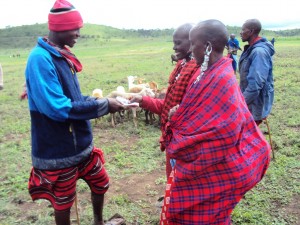
The executive committees members of the three village based widows groups met and began a micro-credit project. Mibaku found further funding locally and as a result of the endeavours of the women themselves and other donors, there are now a number of goats and chickens that the widows are rearing for the benefit of their families and the community. Funds are being raised for buying donkeys to help with carrying produce. Solar panels have been procured and the widows and their families look after the solar panels. The electricity gained is used to charge mobile phones with a small fee being paid to the widows. Alais has worked



